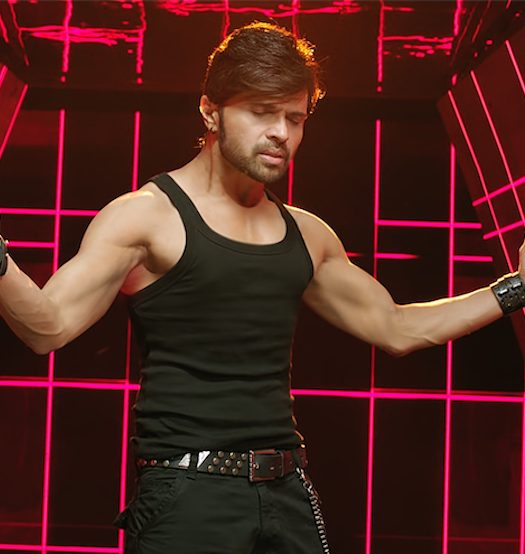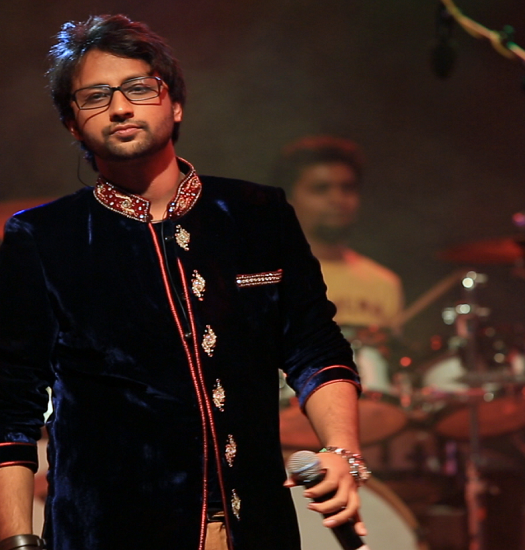Pandolin’s Throwback To The Era Of Indipop
Time for some wistfulness as we take a look back at the era of Indipop, and some memorable Indipop hits – the numbers that made loving Indian music cool.
It was a dark time for Hindi film music. The early 90’s drolled out melodramatic numbers, often repeated in the same monotonous counts of four. Meanwhile, India was growing younger by the day, and the influx of western music and MTV programming created a hole. India needed its own Madonna and Michael Jackson (who, interestingly, came to Mumbai in 1996) who could fuse Indian rhythms with a good dose of western instrumental style to create the subgenre of ‘Indipop’.

When western music made its foray into India in the form of recorded vinyls, it remained but a fancy possession of a few, restricted to the modish spaces of Mumbai (then, Bombay), Calcutta and Bangalore. The rest of the country needed its own to pick up the mantle of popular music, figures that looked much like them, just infinitely cooler and more hip. That paved way for Indipop to come in, and create a space for itself. A lot of it had to do with tape recorders finally materializing, bridging the gap between the rich benefactors of western music and the rising middle class. Cassettes were fairly affordable, especially if Indian, making it much easier for Indian popstars to have a voice, figuratively speaking. And most importantly, India needed a new sound. An inventive, innovative sound that would forward the disco revolution of the 80s. Indipop proved the noble successor, with its ability to fuse various styles into a catchy framework.
One of the pioneering names behind the movement was Biddu, one of the more forward-thinking music producers of the country. Biddu, who was part of one of India’s first few rock bands, Trojans, introduced several artists by composing and producing their albums. This included Alisha Chinai, Shaan and Sagarika (known as India’s own Jackson brother-sister duo, undeservingly), Nazia Hassan and Sohrab, and Shweta Shetty to name a few. Biddu had the distinct insight to pick camera friendly faces with interesting voices that could replicate western style of music unassumingly. Another name that pushed multiplicity into Indipop is Leslie Lewis. Lewis was one half of the legendary fusion duo, Colonial Cousins. But that’s not all. Lewis also pushed the fabulous Asha Bhosle to a cooler worldview as he produced her albums ‘Rahul and I’ which included remixes of R B Burman songs, re-recorded with Asha Bhosle, and ‘Asha Once More’. He also produced albums for KK, Alisha Chinai and Suneeta Rao. Another thing that made Indipop the kind of rage it was, was their zany approach to music videos. The people were good-looking, they adopted American elements, and they approached the American method to a music video, a short movie bridged into a song. There were linear plots to every video, and that made watching them as much important as listening to them.

Indipop can also be credited with the re-emergence of India’s rock band scene. While previously India’s few rock bands were relegated to nightclubs, and didn’t have record deals, the 90s saw Indian Ocean release their album on cassettes. Even fusion rock bands like Silk Route, that introduced Mohit Chauhan, and Euphoria, had successful album debuts.
This was, of course, before the motley crew of Aditya Chopra, Karan Johar and Farhan Akhtar figured out how to make Hindi movies cool, along with the music, and slowly Indipop began to lose its ‘cool’th factor to grander Hindi film music, that had superstars in them. A R Rahman made inroads into the industry in the early 90s, and soon his synth and bass based music reinvented how exclusive Hindi film music could be. It didn’t help that ‘Bollywood’ took many of the ‘singers’ from Indipop like Hariharan, Sonu Nigam, KK and Lucky Ali, and gave them grander arrangements to lend vocals too.
With the onset of the internet though, cassettes became passé. CDs had made their way into the country but nobody was really buying them, what with music being available online. Over time, the Indipop scene became an empty pothole. Not much money could be made, and the better singers always looked to film music for support.

Now unless we have a Indian version of Spotify that allows for music listening with monthly subscriptions, there is a bleak chance for Indipop’s revival. The stars are still there. They just need vocal listeners.
Today, we pick the more enduring tracks of the time, songs that are oft repeated even today!
Disco Deewane – Nazia Hassan
Quite easily the oldest track of the lot, the song laid one of the first foundation stones to the start on Indipop music. Nazia Hassan was a Pakistani singer with an incredibly unique voice. A uniqueness that Biddu, one of India’s foremost producers recognized, and picked her & her brother Sohrab to produce her album. Forget Student of the Year, this song was done best by Nazia Hassan.
Made in India – Alisha Chinai
Everything about this song screamed unique. The lead singer was a very non-Indian looking girl who had a nasally sensual voice, very different from the playback singers of the time, but who was, funnily enough, made in India! In the video she dressed up like a British hybrid but was in Indian palaces, armed by a tiger, so it’s very obviously India. And the very Indian looking Milind Soman was the object of affection. It basically made people believe being ‘made in India’ is cool.
Sa Ni Dha Pa – Colonial Cousins
The amalgamation of the Carnatically trained Hariharan and the rock and jazz understanding Leslie Lewis reaped some of the better pop of its time. They were vocally sound, instrumentally adept and adapting, and they probably did fusion best. Of their songs, ‘Sa Ni Dha Pa’ became immensely popular for its jazz backforce supporting a classical raag. Hariharan went on to sing for Hindi cinema, having lent his vocals to some memorable Rahman numbers, while Leslie Lewis remains one of the pioneering names in Indian independent music, having produced several albums, and having helmed MTV India’s first edition of Coke Studio.
Paree Hoon Main – Suneeta Rao
The silver voiced Suneeta Rao was an absolute favourite for her smoky voice and her sensual screen presence. Before she got relegated to playback singing for movies, her music was a rage, with ‘Paree Hoon Main’ being the most popular for its simple arrangement, and for its ubiquitous self-loving lyrics. All the women sang it, and for some time, they meant it too. And everyone danced to it during dandiya.
Raat Shabnami – Asha Bhosle
Even the great R. D. Burman counted Asha Bhosle as one of the more versatile singers of our time, with her voice ranging from sensual to peppy, from naughty to grieving, as the song commanded. And with Leslie Lewis helming the producer’s hat, Asha Bhosle was now singing songs of young, urban love. And it has Milind Soman, being good-looking, again.
Deewane To Deewane Hain – Shweta Shetty
Her gravelly voice was a unique paradox to the pleasing, honeyed voices of her generation, and that was perhaps her biggest stand-out factor. She did best when singing catchy, uncomplicated dance numbers, that soon became dandiya anthems.
Boom Boom – Biddu
Biddu is one of the inventive faces behind India’s music scene, who was also responsible for some of the more popular indipop tracks, with Boom Boom topping the charts. He went on to produce and compose several albums like the Made in India album and the Shaan and Sagarika albums, before moving to England as a producer.
O Sanam – Lucky Ali
The hoarsely melodic Lucky Ali could be seen as a cool archeologist taking a few drags from his hookah (which had something to do with the raspiness?) in this video, which marked one of the most memorable songs of the 90s. It was a romantic number that surmounted Lucky Ali as the voice of a quivering, nervous, lovelorn generation. The women wanted to be crooned by him, and the men sang his songs over and over again.
Tanha Dil – Shaan
This song not only established Shaan as a singer-songwriter worth noticing, but it also became the unofficial coming-of-age song. We’d like to assume the song had much to do with the general ethos of the time. India’s economy had just opened up, and the country’s youth was grappling with growing globalisation. The song was reflective of an uncertain future. And everyone sang it.
Dooba Dooba – Silk Route
Silk Route gained popularity for Mohit Chauhan’s nasally melodic voice, and their acoustic, easy to listen songs. Of their music though, ‘Dooba Dooba’ is the quintessential pop classic. It was young love, mishmashed with a peppy, soulful undertone.
Thanda Thanda Pani – Baba Sehgal
While Baba Sehgal’s rap credentials are debatable, there is no denying that he made rap music, or a poor imitation of rap music really popular among general folk. In fact, at one time, Baba Sehgal was so popular that his song, ‘Thanda Thanda Pani’ catapulted MTV India to the number 1 spot. And to be fair, Baba was to India then, what Honey Singh tries to be now.
Aankhon Mein – Aryans
Oh, young love! Apart from the fact that the video gave us a baby faced Shahid Kapoor, the song was quite the rage among college kids for its depiction of young, urban romance and the soulful, acoustic music that provides the much needed background. Oh, and the dog, too!
READ: 10 BOLLYWOOD TRACKS TO PUMP UP YOUR WORKOUT VOL II
Note: Pandolin does not own the videos
Disclaimer: The opinions expressed within this POV/BLOG are the personal opinions of the author. PANDOLIN is not responsible for the accuracy, completeness, suitability, or validity of any information on this blog. All information is provided on an as-is basis. The information, facts or opinions appearing on the POV/BLOG do not reflect the views of PANDOLIN and PANDOLIN does not assume any responsibility or liability for the same.



